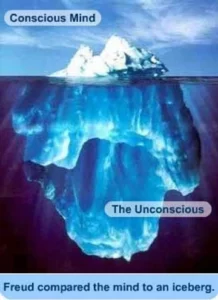Leadership blind spot – What are the ways to identify them?
Everyone has blindspots. Learn yours and your effectiveness as a leader will be immeasurable. Be blind to them and you are destined to a career that will likely derail you or those you lead.
As a coach with 30 years’ experience guiding leaders of growing companies, successful business owners hire me to help them identify and overcome leadership blindspots. And, I’m paid handsomely to point them out. So, what do you do when you are working with someone has them and doesn’t see them?
In my lifetime, I have personally witnessed clients, business associates, mentors, parents, and partners’ blind spots. It’s ironic, perhaps, because people might think that those in the personal development, coaching and self-help fields have it all figured out. But there’s an adage that people often teach what they need to learn themselves.
We all have our challenges, and those are the issues we are aware of. But, like you, we also have blind spots, things about ourselves that we’re not aware of. Like you, we don’t see what we don’t want to see and don’t know what we don’t know. The key is to discover your blind spots so your effectiveness as a person can become even greater. If you’re blind to them, chances are you’ll often end up confused and frustrated at the results you’re getting in life. Or, you might be the kind of leader who is so narcissistic that you end up confusing and frustrating others.
How to identify leadership blind spots
Executive Coach Robert Bruce Shaw wrote a book on the subject called Leadership Blindspots: How Successful Leaders Identify and Overcome the Weaknesses That Matter (published in April 2014 by Jossey-Bass). His book is a comprehensive guide that helps individuals surface and act on unrecognized weaknesses that can impair their effectiveness, damage their organizations, and derail their careers. In his book, he offers pragmatic advice on how to manage blind spots more effectively utilizing examples, worksheets, and surveys that illustrate the practical application of the advice presented. Check out his online survey: Leadership Blindspot Survey questionnaire.
Blindness, per Shaw, can occur in four different areas. They can be about yourself as a leader, about the capabilities of your team, about the strengths and weaknesses of your company, and, finally, about the changes in your industry. A summary of the 20 most common Blindspots seen by the author can be found in a Forbes article written a few years ago. Read it here.
Here are a few of the blind spots to watch out for in yourself:
-
Overestimating your strategic capability: This is often the blind spot of leaders who have strong operational backgrounds, but then get promoted into higher levels of the organization where their role is more strategic.
-
Valuing being right over being effective: This blind spot occurs when a leader thinks s/he already knows the correct answer or best course of action and is therefore unwilling to spend additional time listening to others. S/he may even interrupt people, or call conversations to a conclusion. Your followers quickly learn that it’s a waste of time to raise contrary opinions and ideas.
-
Believing the rules don’t apply to you: At some point, many leaders develop a sense of entitlement along with their level of success, power, and authority. A leader with this flaw might not think that the same rules apply to him/her.
For more blind spots about your team, your company and your market go to the article.
Where do blind spots come from?
In my experience, leaders who aren’t aware of their blind spots or disregard them lead from a dangerous place. At one extreme they can be dangerously ineffective, and at the other extreme dangerously toxic.
The fact is, everyone has at least one or more blind spots. So, what is a blind spot?
American psychologists Joseph Luft and Harry Ingham developed a simple and useful tool for illustrating and improving self-awareness and mutual understanding between individuals within a group. Naming it by combining their first names Joe and Harry, the Johari Window was devised while researching group dynamics at UCLA. Today, it’s especially useful for the identification of our behaviors — specifically empathy and cooperation — improving communications in groups and interpersonal development.
The four regions in this popular coaching model are:
Quadrant 1: The open/free area. This is what is known by the self (you) and also by others. This is what we call public.

Quadrant 2: The blind area is what is unknown by the person about him/herself, but which others know — a blind area, blind self, or “blind spot.”
Quadrant 3: The hidden area is what the person knows about him/herself that others do not know. This is what we call private. This is the hidden self, avoided area, avoided self or “facade.” Some level of self-disclosure is shared with others or it’s kept secret.
Quadrant 4: This is what is unknown by the person about him/herself and is also unknown by others — the unknown area or unknown self.
In Pat Lencioni’s book, The Five Dysfunctions of a Team, he describes the many pitfalls that teams face as they seek to “row together”. He defines and describes an excellent model for understanding what the leaders of teams must work on to overcome their dysfunctions. Since I use this model with many clients, I am all too aware that the absence of trust is the foundation of the model and oftentimes the root cause of the other problems.
Shining light into your blind spots
Personally, I have witnessed teams where trust was absent and, despite their familiarity with the model, none of the tools Lencioni recommended in his book worked to overcome the lack of distrust being foste red by the leader. Either Lencioni isn’t giving all his tricks away in his book, or perhaps this is his own blind spot. In Lencioni’s Overcoming the 5 Dysfunctions of a Team: A Field Guide, the author gives more in-depth recommendations on how to overcome each of the dysfunctions. And I particularly like his tools for overcoming distrust on teams. I’ve used his lifeline exercises to share personal bios and reviewed team member’s behavioral styles (using the DISC and Values assessment instruments) to understand their natural conflict and motivation styles. And, I’ve facilitated the highly impactful team effectiveness exercise where your best team attribute and one you need to work on is shared round-robin style with a team.
red by the leader. Either Lencioni isn’t giving all his tricks away in his book, or perhaps this is his own blind spot. In Lencioni’s Overcoming the 5 Dysfunctions of a Team: A Field Guide, the author gives more in-depth recommendations on how to overcome each of the dysfunctions. And I particularly like his tools for overcoming distrust on teams. I’ve used his lifeline exercises to share personal bios and reviewed team member’s behavioral styles (using the DISC and Values assessment instruments) to understand their natural conflict and motivation styles. And, I’ve facilitated the highly impactful team effectiveness exercise where your best team attribute and one you need to work on is shared round-robin style with a team.
However, my personal thoughts on building trust go beyond knowing each other. For many teams to be effective, you MUST like each other.
Personally, I have been a member of teams where, despite doing such team-building exercises, the plain fact in sight was that people didn’t like and/or didn’t trust the leader. In one company, our leader was very likable and his charisma drew them in … but his blind spot was he didn’t acknowledge or admit the financial realities to the employees, who resented him for it and crucified him for it.
In another case, the leader was somewhat maniacally driven but friendly to work with and for. Only his blind spot was that he had a family history of mental illness and alcoholism, which drove through his integrity and derailed his career.
And, in another situation, a successful consultant who people joined because of his apparent rainmaking skills was joined by people who thought he would share his financial success to enrich everyone including himself. But, his narcissistic, selfish, and controlling behaviors around money and aggressive, sometimes hostile, personality drove associates and clients away from him.
 If you don’t play nice with others, aren’t likable, or don’t exhibit humility, kindness and a generosity of spirit, then it will be hard to build trust or a winning team. Just look at the best sports teams. In NBA basketball, for example, winning teams require leaders like Michael Jordan, Magic Johnson, LeBron James, and Stephen Curry who surround themselves with others who are humble, hungry, and have people smarts.
If you don’t play nice with others, aren’t likable, or don’t exhibit humility, kindness and a generosity of spirit, then it will be hard to build trust or a winning team. Just look at the best sports teams. In NBA basketball, for example, winning teams require leaders like Michael Jordan, Magic Johnson, LeBron James, and Stephen Curry who surround themselves with others who are humble, hungry, and have people smarts.
As the picture illustrates, the conscious mind is just the tip of the iceberg. The real driver of our behavior and greater part of who we are lies in the unconscious mind. You’ve got to look beneath the surface to see how people operate. It is there that you’ll find your blind spots and become a more conscious individual.
If you want to overcome your blind spots, solicit feedback from others, whether they be therapists, coaches, mentors, spouses, family, friends, or fellow teammates. Shine light into the darkness to drive out the darkness and bring your issues to the surface. Then, and only then, are you bound to be more effective and successful in business and life.
Jonathan Goldhill is a Los Angeles-based Gazelles Coach who has been advising, coaching, consulting, financing, growing, and training entrepreneurs, business owners, and leaders in closely-held and family-owned businesses since 1987. He can be reached at Jon@TheGoldhillGroup.com.

